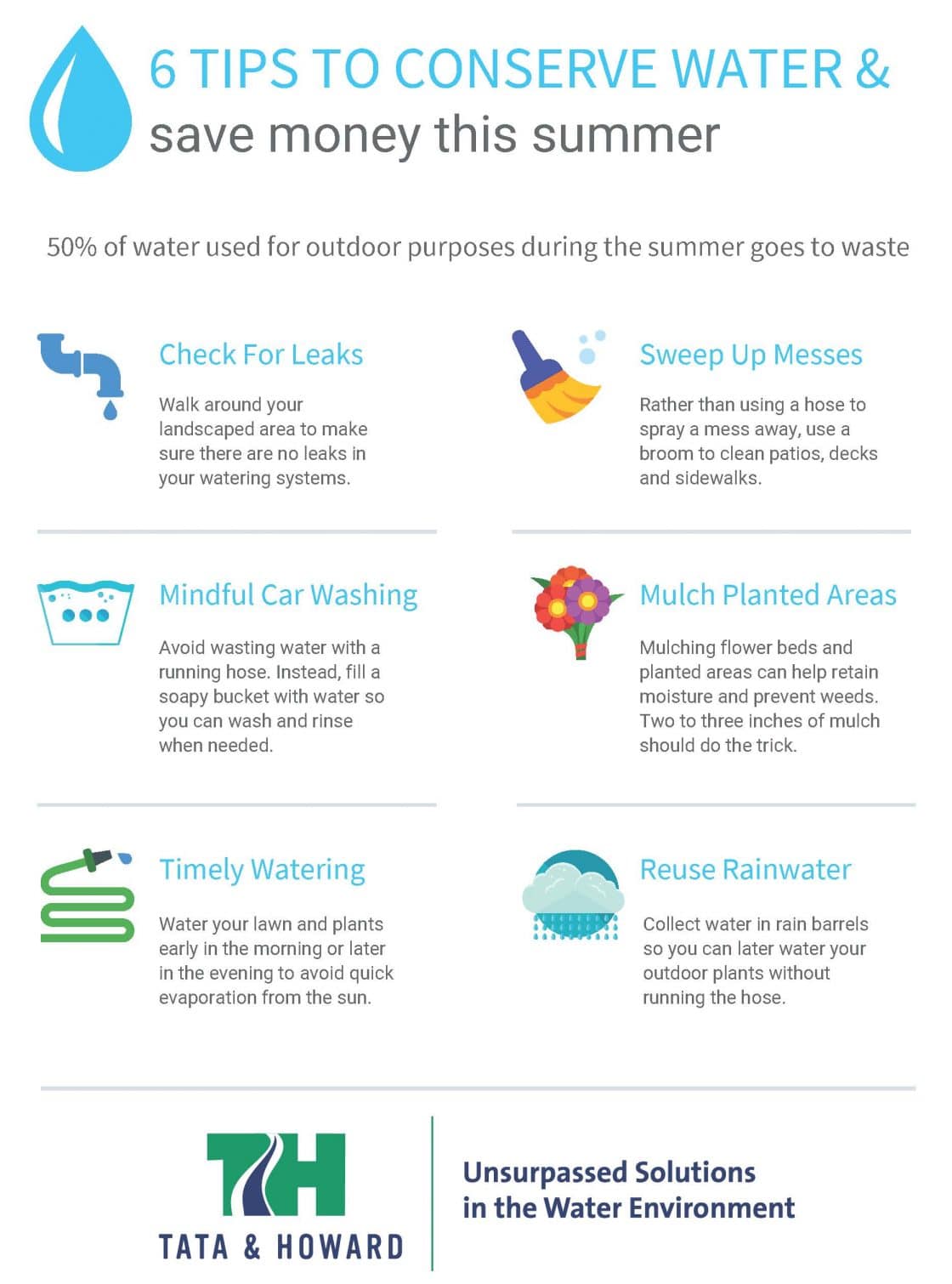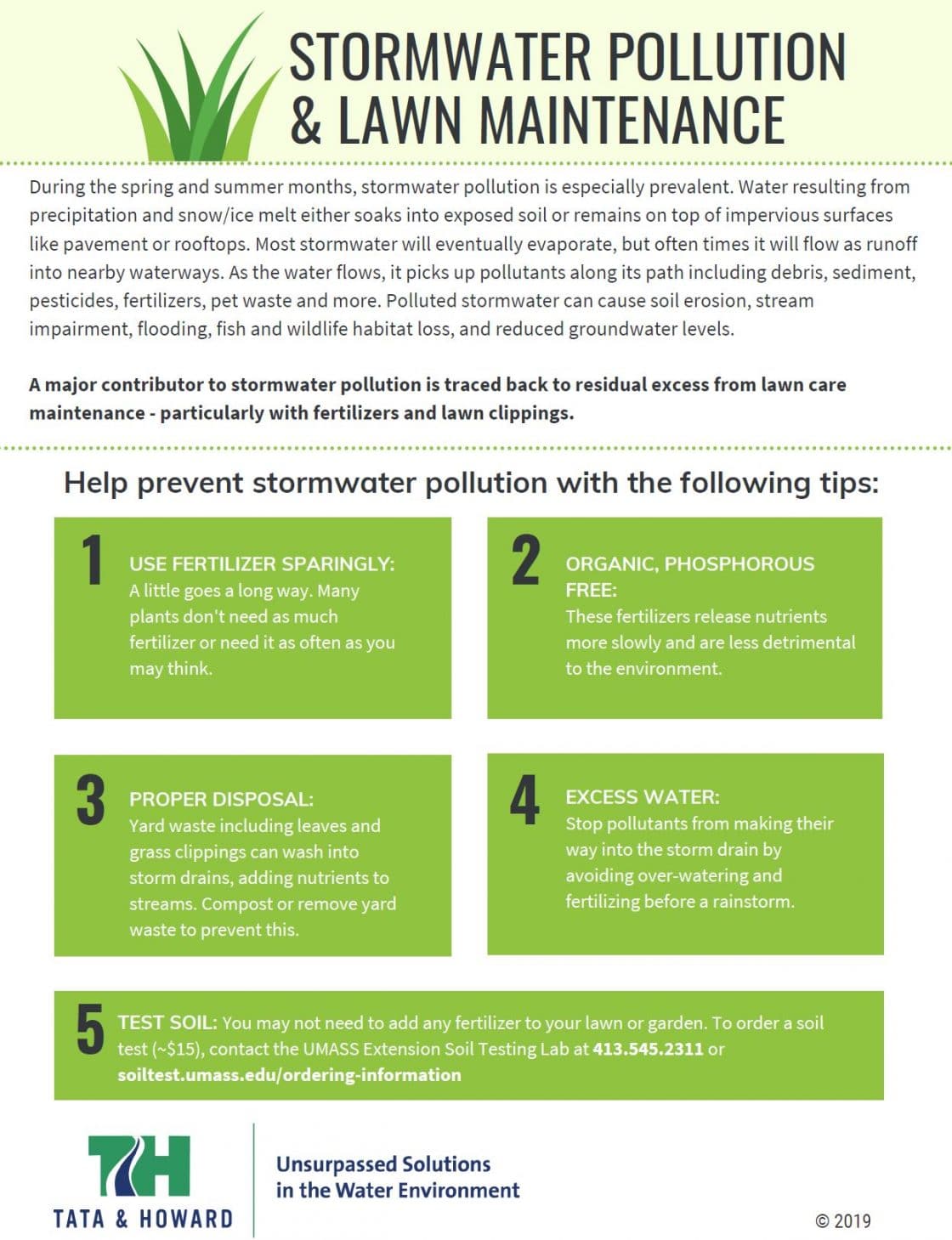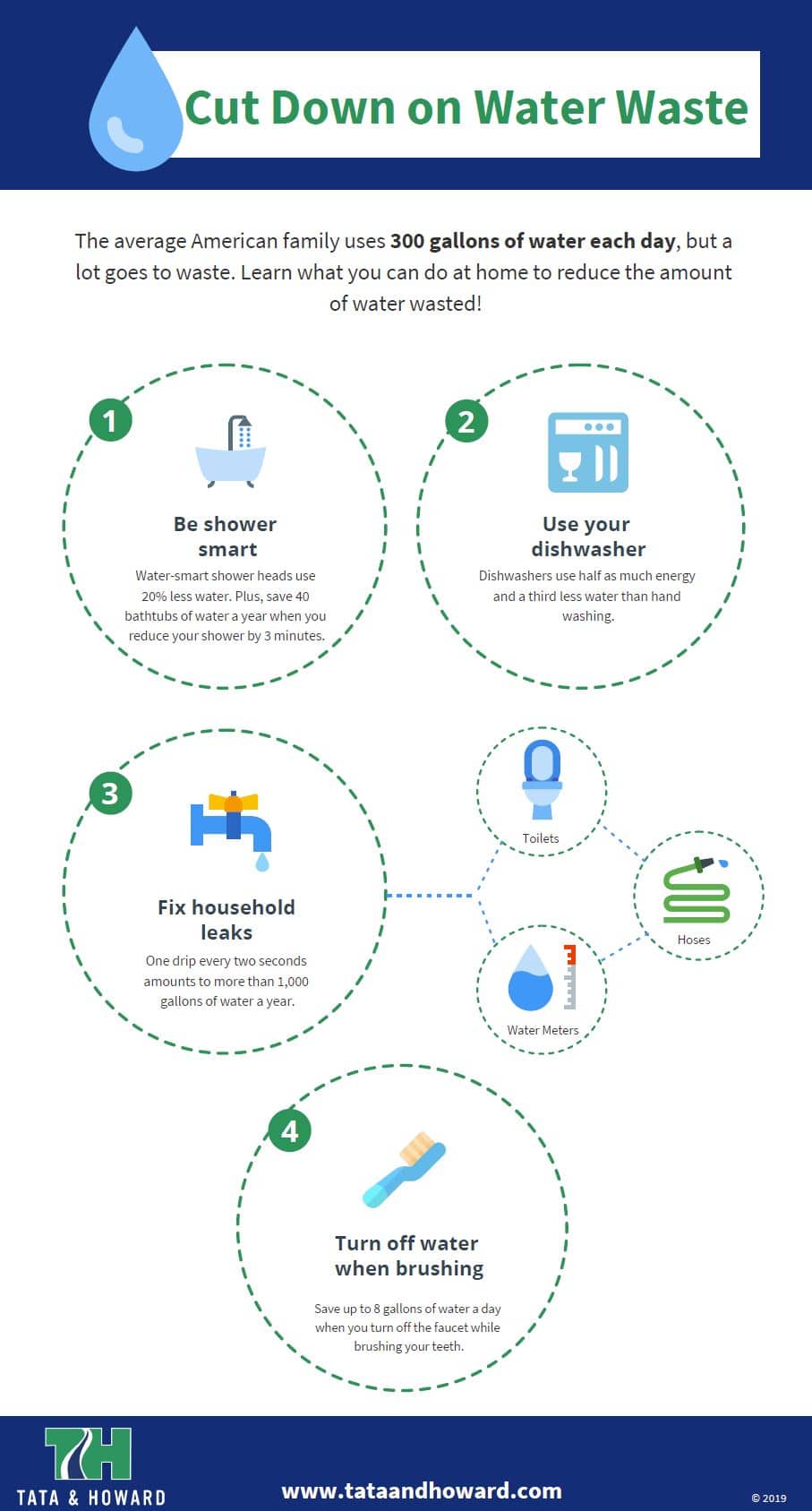In addition to keeping ourselves cool and hydrated during the summer months, we also have to pay mind to our plants and yards. With excess heat burning down, keeping plants and grass healthy requires a lot more water. Check out six tips for how you can conserve water and save money this summer.

Please feel free to print and share our 6 Tips to Conserve Water & Save Money Infographic with attribution to Tata & Howard, Inc. A high-resolution pdf can be downloaded by clicking here.
Check For Leaks
Walk around your landscaped area to make sure there are no leaks your watering systems.
Sweep Up Messes
Rather than using a hose to spray a mess away, use a broom to clean patios, decks, and sidewalks.
Mindful Car Washing
Avoid wasting water with a running hose. Instead, fill a soapy bucket with water so you can wash and rinse as need.
Mulch Planted Areas
Mulching flower beds and planted areas can help retain moisture and prevent weeds. Two to three inches of mulch should do the trick.
Timely Watering
Water your lawn and plants early in the morning or later in the evening. This will prevent the water from being quickly evaporated by the sun.
Reuse Rainwater
Collect water in rain barrels so you can later water your outdoor plants without running the hose.
We hope you will consider these tips as you aim to conserve water and save money this summer.


